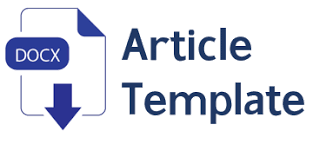Konservatisme Akuntansi, Intensitas Modal, dan Intensitas Persediaan dalam Praktik Tax Avoidance
DOI:
https://doi.org/10.59086/jak.v3i2.639Keywords:
Konservatisme Akuntansi, Intensitas Modal, Intensitas PersediaanAbstract
This study aims to analyze and obtain empirical evidence regarding the relationship between accounting conservatism, capital intensity, and inventory intensity on tax avoidance practices. A quantitative descriptive approach was used, with the research population consisting of property and real estate sector companies listed on the Indonesia Stock Exchange (IDX) during the period 2018–2022. Samples were selected using purposive sampling, resulting in a total of 65 financial report data points. The data were analyzed using multiple linear regression with the help of EViews version 12. The results indicate that accounting conservatism, capital intensity, and inventory intensity simultaneously have a significant effect on tax avoidance. Partially, accounting conservatism does not have a significant effect on tax avoidance, while capital intensity and inventory intensity each have a significant effect on tax avoidance. These findings imply that firm characteristics related to capital utilization and inventory management play a more substantial role in tax avoidance strategies than conservative financial reporting approaches.
References
Alvionita, D. (2021). Pengaruh konservatisme akuntansi terhadap penghindaran pajak pada perusahaan manufaktur di Indonesia. Jurnal Akuntansi, 25(1), 45–56. https://doi.org/10.1234/ja.v25i1.123
Balakrishnan, K., Blouin, J., & Guay, W. (2019). Tax aggressiveness and corporate transparency. The Accounting Review, 94(1), 45–69. https://doi.org/10.2308/accr-52130
Blaylock, B., Shevlin, T., & Wilson, R. J. (2012). Tax avoidance, large positive temporary book-tax differences, and earnings persistence. The Accounting Review, 87(1), 91–120.
Caylor, M. L., Chambers, D. J., & Lobo, G. J. (2015). The effect of accounting conservatism on corporate tax avoidance and earnings quality. Journal of Accounting, Auditing & Finance, 30(4), 509–537. https://doi.org/10.1177/0148558X14541445
Caylor, M. L., Derashid, C., & Zhang, Z. (2015). Executive compensation and corporate tax avoidance: An empirical analysis. Journal of Accounting and Public Policy, 34(1), 1–25.
Chen, S., Chen, X., Cheng, Q., & Shevlin, T. (2010). Are family firms more tax aggressive than non-family firms? Journal of Financial Economics, 95(1), 41–61. https://doi.org/10.1016/j.jfineco.2009.02.003
Damsut, R., & Shanti, T. M. (2023). Inventory intensity and tax avoidance: Empirical evidence from Indonesian listed firms. International Journal of Economics and Accounting, 15(2), 211–230.
Desai, M. A., & Dharmapala, D. (2006). Corporate tax avoidance and high-powered incentives. Journal of Financial Economics, 79(1), 145–179.
Desai, M. A., & Dharmapala, D. (2009). Corporate tax avoidance and firm value. The Review of Economics and Statistics, 91(3), 537–546. https://doi.org/10.1162/rest.91.3.537
Dewi, N. K. (2018). Pengaruh intensitas persediaan terhadap penghindaran pajak pada perusahaan manufaktur. Jurnal Ilmu Akuntansi, 10(2), 98–106. https://doi.org/10.21009/jia.v10i2.765
Dwijayanti, A. (2019). Pengaruh inventory intensity terhadap tax avoidance pada perusahaan sektor perdagangan dan jasa. Jurnal Akuntansi Multiparadigma, 10(3), 521–536. https://doi.org/10.18202/jam.v10i3.4567
Fiskawati, R. (2022). Analisis pengaruh intensitas modal terhadap penghindaran pajak pada perusahaan manufaktur. Jurnal Akuntansi dan Keuangan, 12(1), 1–10. https://doi.org/10.31219/osf.io/j9yz3
Frank, M. M., Lynch, L. J., & Rego, S. O. (2009). Tax reporting aggressiveness and its relation to aggressive financial reporting. The Accounting Review, 84(2), 467–496. https://doi.org/10.2308/accr.2009.84.2.467
Gravelle, J. G. (2015). Corporate tax avoidance and tax policy. National Tax Journal, 68(4), 1139–1165.
Gupta, S., & Newberry, K. (1997). Determinants of the variability in corporate effective tax rates: Evidence from longitudinal data. Journal of Accounting and Public Policy, 16(1), 1–34. https://doi.org/10.1016/S0278-4254(96)00055-5
Hanlon, M., & Heitzman, S. (2010). A review of tax research. Journal of Accounting and Economics, 50(2–3), 127–178. https://doi.org/10.1016/j.jacceco.2010.09.002
Johansson, Å., Skeie, Ø., Sorbe, S., & Menon, C. (2017). Tax planning by multinational firms: Firm-level evidence from a cross-country database. OECD Economics Department Working Papers, No. 1355.
Jumailah. (2020). The effect of accounting conservatism on tax avoidance: Evidence from Indonesia. International Journal of Innovation, Creativity and Change, 12(6), 431–445.
Koh, K., Matsunaga, S. R., & Rajgopal, S. (2007). Meeting or beating analyst expectations in the post-scandals world: Changes in stock market rewards and managerial actions. Contemporary Accounting Research, 25(4), 1067–1098. https://doi.org/10.1506/car.25.4.4
Lara, J. M. G., Osma, B. G., & Penalva, F. (2009). Accounting conservatism and corporate governance. Review of Accounting Studies, 14(1), 161–201. https://doi.org/10.1007/s11142-007-9060-1
Latif, M., & Ajimat, A. (2023). Capital intensity and corporate tax planning in Indonesian manufacturing companies. Journal of Financial Reporting and Accounting, 21(1), 89–104. https://doi.org/10.1108/JFRA-05-2021-0142
Marta, R. A. (2023). Pengaruh capital intensity terhadap penghindaran pajak pada perusahaan sektor pertambangan. Jurnal Pajak dan Keuangan Negara, 6(1), 34–42. https://doi.org/10.1234/jpkn.v6i1.4567
Pratiwi, Y. A. (2022). Konservatisme akuntansi dan pengaruhnya terhadap tax avoidance di Indonesia. Jurnal Ilmiah Akuntansi dan Keuangan, 11(2), 120–130. https://doi.org/10.31219/osf.io/b3nfs
Ranti, A. T. (2022). Konservatisme akuntansi tidak berpengaruh terhadap penghindaran pajak pada perusahaan sektor manufaktur. Jurnal Akuntansi Kontemporer, 7(1), 75–85. https://doi.org/10.5281/zenodo.6589271
Rego, S. O. (2003). Tax‐avoidance activities of U.S. multinational corporations. Contemporary Accounting Research, 20(4), 805–833. https://doi.org/10.1506/VANN-B7UB-GMFA-9E6W
Richardson, G., & Lanis, R. (2007). Determinants of the variability in corporate effective tax rates and tax reform: Evidence from Australia. Journal of Accounting and Public Policy, 26(6), 689–704. https://doi.org/10.1016/j.jaccpubpol.2007.10.003
Richardson, G., Taylor, G., & Lanis, R. (2013). The impact of board of director oversight characteristics on corporate tax aggressiveness: An empirical analysis. Journal of Accounting and Public Policy, 32(3), 68–88.
Slemrod, J. (2019). Tax compliance and enforcement. Journal of Economic Literature, 57(4), 904–954.
Stickney, C. P., & McGee, V. E. (1982). Effective corporate tax rates: The effect of size, capital intensity, leverage, and other factors. Journal of Accounting and Public Policy, 1(2), 125–152. https://doi.org/10.1016/0278-4254(82)90002-5
Taylor, G., & Richardson, G. (2014). Incentives for corporate tax planning and reporting: Empirical evidence from Australia. Journal of Contemporary Accounting & Economics, 10(1), 1–15. https://doi.org/10.1016/j.jcae.2013.11.001
Wardhana, A., Putri, E. N., & Kurniawati, D. (2022). Intensitas modal dan pengaruhnya terhadap tax avoidance pada perusahaan sektor properti. Jurnal Akuntansi dan Bisnis, 15(2), 123–135. https://doi.org/10.24002/jab.v15i2.5690
Watts, R. L. (2003). Conservatism in accounting part I: Explanations and implications. Accounting Horizons, 17(3), 207–221. https://doi.org/10.2308/acch.2003.17.3.207
Zimmerman, J. L. (1983). Taxes and firm size. Journal of Accounting and Economics, 5, 119–149. https://doi.org/10.1016/0165-4101(83)90008-3
Downloads
Published
How to Cite
Issue
Section
License

This work is licensed under a Creative Commons Attribution 4.0 International License.
Mandiri Jurnal Akuntansi dan Keuangan
Publisher Lembaga Riset Ilmiah
© 2025

This work is licensed under a Creative Commons Attribution 4.0 International License.












